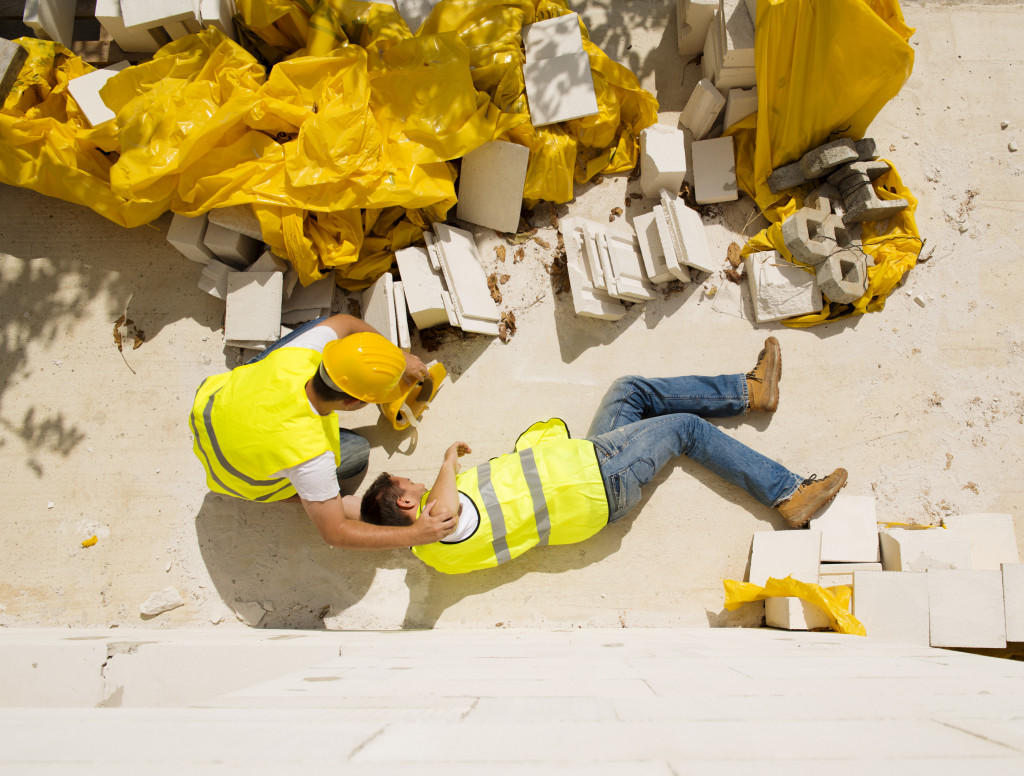- Construction work is a hazardous profession with high injury and death rates.
- The most common causes of fatalities are falls, electrocution, and accidents involving moving objects.
- To ensure safety, workers should utilize proper safety equipment, follow regulations, and have an emergency response plan.
- Employers must provide appropriate training and resources to protect their workers from harm.
Construction work is one of the most dangerous professions in the world. Despite efforts to reduce workplace injury rates, construction workers are at risk of severe daily injury or death from accidents. According to the Occupational Safety and Health Administration (OSHA), 20% of all worker fatalities in the private industry occurred in the construction industry. This means that one in five worker deaths were in construction, highlighting the hazardous nature of the profession.
Construction workers face various risks on the job, such as falls, electrocution, and getting hit by moving objects. Falls from height cause the most deaths among construction workers, accounting for nearly 36% of deaths in the industry. Electrocutions are the second-leading cause of fatalities in construction, responsible for almost 10% of worker deaths. The third and fourth highest causes of death among construction workers are being struck by objects and caught between equipment, machinery, or structures.
Ensuring your construction workers are safe and secure on the job will be vital. Here are a few tips to consider:
Utilizing Safety Equipment

The use of safety equipment is of utmost importance for construction workers. It reduces the risk of injuries and ensures their safety while working on the site. This section will discuss some crucial safety equipment construction workers should utilize to mitigate potential hazards.
Fall Protection Equipment
Falling from a height is one of the most common causes of fatalities in the construction industry. As per OSHA regulations, employers must provide fall protection equipment for construction workers who work at a height of six feet or more. Safety harnesses keep the workers attached to a secure anchorage point, while lanyards connect the harness to the anchor point. Anchor points should be able to support at least 5,000 pounds per worker attached. The use of safety nets is also an effective method of fall protection.
Head Protection Equipment
Head injuries are prevalent in the construction industry due to falling objects, low-hanging hazards, and workers’ proximity to moving equipment. Wearing a hard hat can minimize the risk of injuries to the head, such as concussions, skull fractures, and brain injuries. Hard hats come in different classes, depending on the level of protection required. Class G hard hats are designed for general use, Class E for electrical work, and Class C for comfort purposes.
Hand Protection Equipment
Construction workers’ hands are exposed to many hazards, such as sharp objects, abrasive surfaces, heat, and chemicals. Hand injuries can cause severe damage, disability, and even loss of limbs. Wearing gloves can protect against these hazards, reducing the risk of puncture wounds, hand lacerations, and burns. Gloves come in different materials and thicknesses, depending on the type of hazard encountered. For example, leather, vinyl, and rubber gloves are suitable for general lifting and handling of materials on the site. However, chemical-resistant gloves are required when working with hazardous materials.
Eye and Face Protection Equipment
Construction workers face many eye and face hazards, such as dust, debris, chemicals, and welding sparks. These hazards can cause irritation, eye infections, and vision loss. Wearing safety glasses, goggles, and face shields can reduce the risk of eye and face injuries. Safety glasses are ideal for protecting against flying debris, while goggles provide a superior seal around the eyes and protect against liquid chemical splashes. Face shields safeguard against dust, fumes, and flying objects while allowing for face and eye protection.
Following Safety Protocols and Regulations

Construction workers should also be aware of the safety protocols and regulations that their employers have established. Employers must ensure that all workers understand and follow OSHA standards, such as proper machine guarding practices, lockout/tagout procedures for maintenance work, construction site housekeeping guidelines, etc. Additionally, employers must provide appropriate training to their workers on using safety equipment and practices to reduce injuries and fatalities on the job.
Another safety protocol to consider is safety meetings, designed to communicate workplace safety’s importance and address potential hazards. Safety meetings should be held regularly to review any changes in equipment or procedures, discuss common issues, and ensure that all workers understand their roles and responsibilities when it comes to safety.
Creating Emergency Response Situations
Another critical aspect of ensuring safety for construction workers is creating emergency response situations. It’s essential to have a plan to address any kind of emergency that may arise on the job, such as fires, medical emergencies, natural disasters, and security threats. Employers should ensure workers know the procedures they must follow in an emergency, such as evacuation plans and proper communication systems.
Additionally, employers must provide first-aid kits on-site and appropriate training for administering basic first aid when needed. Construction workers should also be taught how to properly use fire extinguishers if a fire occurs on the site. A well-thought-out emergency plan can help mitigate potential dangers and save lives in critical situations.
Final Thoughts
Ensuring safety for construction workers is essential to minimize the risks of injuries and fatalities on the job. Following proper safety protocols, utilizing safety equipment, and creating emergency response plans are all necessary steps that should be taken to ensure the safety of construction workers. By accepting these precautions, employers can help protect their workers from harm and create a safer on-site working environment.







